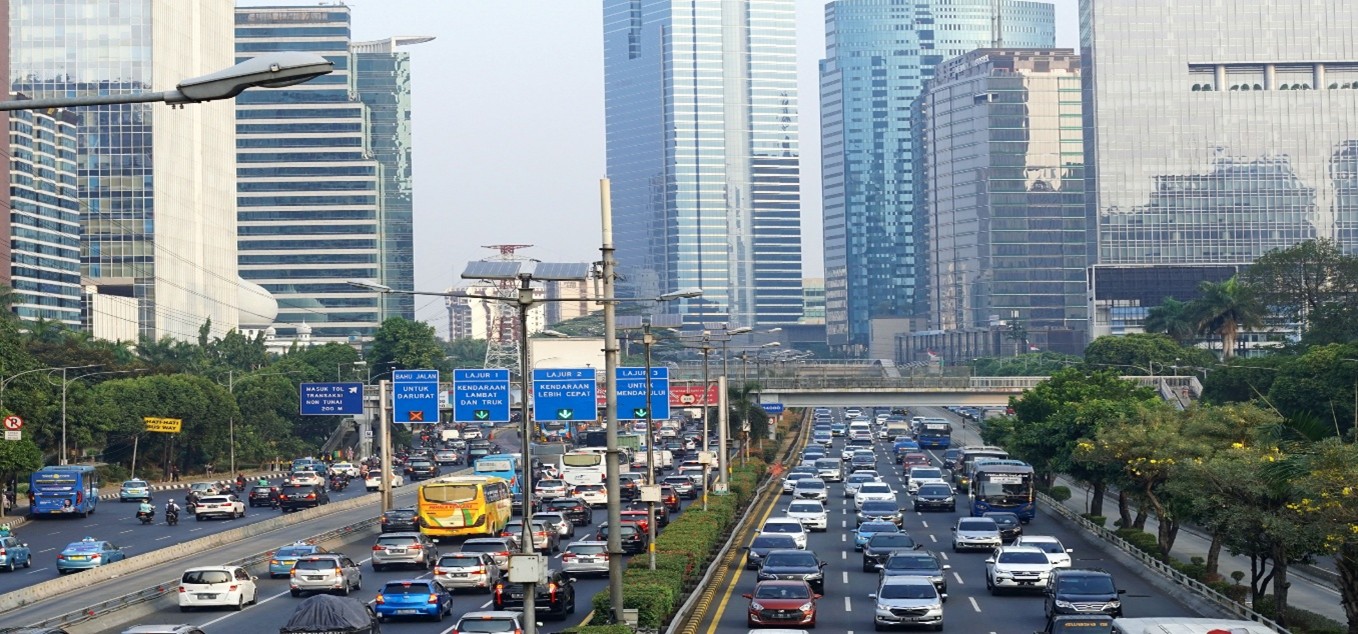Increased adoption of electric vehicles (EVs), supply chain localization, policy incentivization, and the continued dominance of Indonesia and Thailand as production hubs will be among key trends shaping automotive markets across ASEAN.
Ming Lih Chan, Research Manager – Mobility
The increased adoption of electric vehicles (EVs), supply chain localization, policy incentivization, and the continued dominance of Indonesia and Thailand as production hubs will be among key trends shaping the ASEAN automotive market. While infrastructure development and higher disposable incomes will continue to support long-term passenger vehicle (PV) expansion in the region, growth momentum will be tempered by economic slowdowns in several countries. Accordingly, automotive stakeholders will need to strategically recalibrate in order to sustain growth.
Mixed Performance Across the Region in 2024
In 2024, ASEAN’s combined PV and pickup truck sales reached 3.0 million units, marking a year-over-year (Y-o-Y) decline of 2.3%. The drop was largely due to weak sales in Indonesia and Thailand, two of the region’s largest markets. Multiple factors contributed to the decline, including slower GDP growth, inflation, and continued supply chain disruptions.

Vietnam was the strongest performer, with a 19.9% rise in sales driven by surging demand for EVs and robust growth by local manufacturer, VinFast. The Philippines and Malaysia also recorded modest increases. Despite overall market pressures, Japanese OEMs like Toyota, Honda, and Mitsubishi maintained their lead, with Toyota retaining the top position and Malaysian OEM Perodua cementing its credentials as the region’s best-selling local brand.
The EV segment grew in most countries. Indonesia’s EV sales rose by over 150% Y-o-Y. Malaysia and the Philippines also recorded strong EV growth, even as Vietnam’s EV market expanded, led by VinFast. Thailand was the exception, with a decline in EV sales. Chinese EV manufacturers, including BYD, Wuling, Geely, and Jaecoo, strengthened their market presence, with BYD leading EV sales in four of the five key markets.
Thailand and Indonesia consolidated their position as important manufacturing hubs. However, rising interest rates and regional economic challenges affected both production and demand. Meanwhile, governments in several countries continued to implement investment incentives to support EV adoption and localization of manufacturing, particularly from Chinese, Japanese, and South Korean OEMs.
To learn more, please see: ASEAN Automotive Growth Outlook, 2025, Global Automotive Industry Outlook and Growth Opportunities, 2025, China Automotive Outlook, 2025, Global Electric Car Market Outlook, 2025, or contact [email protected] for information on a private briefing.
Gradual Stabilization and EV Growth in 2025
PV and pickup truck sales in 2025 are expected to remain steady at around 3.0 million units. Vietnam is forecast to lead regional growth, fueled by EV adoption and continued expansion by VinFast. The Philippines and Thailand are projected to post modest gains, while Indonesia’s market could continue to face subdued demand due to weak consumer confidence and macroeconomic headwinds.
EVs are expected to remain a key growth segment. Policy support in the form of tax incentives, subsidies, and non-fiscal measures is encouraging both domestic and foreign OEMs to expand their electric offerings. Countries such as Indonesia, Thailand, and Vietnam, with active EV incentive programs, are anticipated to experience increased EV sales and investments.
The shift toward electrification will require regional supply chains to be reconfigured. Greater localization of critical components, including batteries and semiconductors, is expected. While this presents opportunities for suppliers in emerging EV markets, traditional ICE-focused suppliers could face operational and structural challenges. Regional integration of supply chains will be essential for maintaining competitiveness and improving cost efficiencies.
Chinese OEMs are likely to further expand their presence, supported by price competitiveness, a wide range of EV offerings, and market-specific strategies. They will continue to challenge Japanese OEMs, who are expected to retain leadership in some markets but face growing pressure due to a limited presence in the fully electric vehicle segment.
Key Trends Reshaping the Market Landscape
Thailand and Indonesia continue to serve as core manufacturing hubs, especially for EV production. Foreign OEMs are increasing investment in these countries, drawn by incentives and access to raw materials. Simultaneously, Malaysia and Vietnam are developing capabilities in EV component manufacturing, particularly for batteries and semiconductors.
Vietnam has rapidly become one of ASEAN’s most active EV markets, driven by national electrification targets and government incentives. The country aims for EVs to account for 30% of new car sales and 22% of motorbike sales by 2030. Beyond strong policy support, EV penetration has been facilitated by the rise of local automotive giant, VinFast.
Localization of supply chains remains a strategic priority. Thailand and Indonesia are working to reduce import reliance by building local capabilities in parts manufacturing, raw material processing, and EV component production. The objectives here are to lower production costs, improve competitiveness, and support automotive exports. As EV prices fall due to localized manufacturing, adoption rates are expected to pick up, especially for entry-level vehicles and two-wheelers.
Future Outlook
Thailand and Indonesia are well-positioned to attract further investment in EV manufacturing due to their supportive policy environments and developing ecosystems. Companies will need to forge partnerships with local suppliers to secure access to essential materials such as nickel that is widespread in Indonesia and to take advantage of tax exemptions prevalent in Thailand.
To boost EV adoption, automakers will need to prioritize affordability. ASEAN markets exhibit high demand for two-wheelers, compact vehicles, and light commercial vehicles. Introducing cost-effective EV models that meet regional needs, along with incentives like reduced charging costs or bundled maintenance, will help overcome price barriers. Simultaneously, improving charging infrastructure, particularly in underserved areas, or offering solutions such as battery-swapping for two-wheelers and fast-charging networks in urban environments, will boost uptake.
With global supply chains facing increasing disruptions, automakers will need to capitalize on government incentives to invest in local production facilities for batteries and other critical EV components. Collaboration with local partners on technology development will further strengthen the region’s manufacturing ecosystem.
Vietnam, Thailand, and Malaysia are poised to play increasingly important roles in ASEAN’s evolving automotive landscape. With robust policy support and growing interest from global OEMs, the region is set to attract continued investment in EV assembly, battery production, and related infrastructure. Japanese OEMs will need to adapt quickly to the growing influence of Chinese and regional competitors, including VinFast, Perodua, Proton, and BYD.
With inputs from Amrita Shetty, Associate Director, Communications & Content – Mobility






